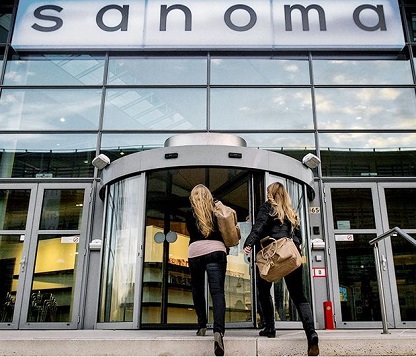Sanoma completes the EUR 465 million acquisition of Santillana Spain
HELSINKI: Sanoma Corp has completed the acquisition of Santillana Spain, a leading Spanish provider of K12 learning materials, from Promotora de Informaciones S.A. (Grupo Prisa).

The acquisition was announced on 19 October 2020.
Cash and debt free purchase price of the acquired business was EUR 465 million, including approx. EUR 50 million of net debt and adjustments, and it was paid at closing. The purchase price represents an EV / pro forma adjusted EBITDA 2019 multiple of 9.3.
Sanoma will finance the acquisition fully with debt through two existing debt facilities: a syndicated three-year term loan of EUR 200 million with a group of ten relationship banks signed on 2 December 2020 and a committed bridge financing facility of EUR 280 million (original amount EUR 480 million) with Nordea Bank Abp and OP Corporate Bank plc. Subsequently, Sanoma will convert the bridge facility into long-term funding.
Sanoma will book approx. EUR 6 million of transaction costs as items affecting comparability (IACs) in Sanoma Learning’s Q4 2020 result. Preliminary assessment concludes that the acquisition results to an annual PPA amortisation of approx. EUR 10 million. Furthermore, integration of the acquired business is expected to result in IACs and capital expenditure of approx. EUR 7 million, spread across an 18-month period after closing. The acquired business will be reported as part of Sanoma Learning SBU as of 31 December 2020.
“I am very pleased to announce the closing of our acquisition of Santillana Spain so shortly after signing. I warmly welcome our new colleagues in Spain to Sanoma, and I am looking forward to a fast and successful integration. We see great potential in the Spanish market related both to the upcoming curriculum renewal, expected to be implemented in 2022–23, and the increasing digitalisation, which has been stimulated by higher use of remote learning during the coronavirus pandemic. We will use our experience from the highly digitalised countries we are active in and our digital platforms developed over the past 10 years to accelerate the growth of Santillana Spain over time,” says Susan Duinhoven, President and CEO of Sanoma.
“This acquisition is a strong next step on our strategic path to grow our K12 learning services business in Europe. From 2021 onwards, Learning will contribute close to 70% of the Group’s earnings (operational EBIT excl. PPA) and the acquisition further strengthens our free cash flow,” she continues.
Santillana Spain is a leading provider of learning materials, primarily textbooks, for primary and secondary education in Spain. It offers schools, students and parents recognised and reputable high-quality learning content under well-known brands, such as Santillana, Loqueleo and Richmond, which Sanoma has the right to use through exclusive license agreements. In total, K12 represents approx. 90% and primary education approx. 65% of Santillana Spain’s net sales, offering the business high resilience over-the-cycle.
In 2019, net sales and earnings of Santillana Spain grew significantly as demand for the current curriculum K12 learning materials peaked. In 2020–21, a typical cyclical decline in market demand for K12 learning materials is expected ahead of the introduction of the new curriculum.
This is expected to result in significantly lower net sales and earnings of Santillana Spain compared to 2019. The introduction of a new curriculum is expected to accelerate demand in 2022–23 as part of the enactment of a new educational law in Spain (LOMLOE).
Preliminary assessment concludes that the value of the acquired assets on the seller’s balance sheet was approx. EUR 73 million at the end of November 2020, of which intangible assets represented approx. EUR 11 million.
The 586 employees working in the acquired business will become employees of Sanoma Learning as from closing.
Sanoma estimates that the acquisition will create run-rate net annual synergies of approx. EUR 4 million. The synergies are expected to be realised in full during 2022 and mainly relate to procurement, technology as well as shared operations and support functions.